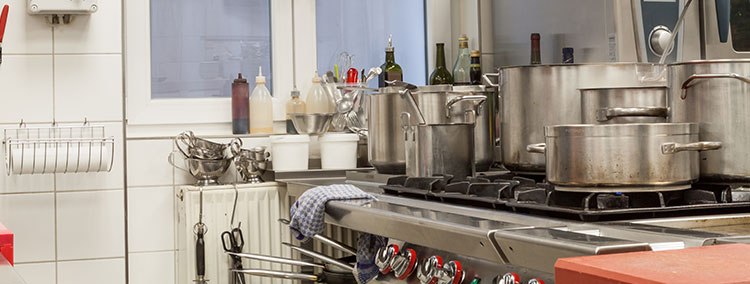
According to dishwasher repair professionals, one of the prime reasons dishwashers develop problems is because homeowners load them improperly.
Do you give much thought to how you load your appliance? Here are some of the ways you might be loading your dishwasher wrong:
You group each type of silverware together
It seems logical to keep the knives in one compartment, forks in another, and spoons in a third, right? While you have an easy time removing the items from the dishwasher, the practice makes that the silverware nestle together.
The forks wind up with their tines pressed up against one another and the spoons, well, they spoon. This impedes the water flow making it harder for each item to get adequately clean.
What should you do instead?
You should mix up the silverware in each compartment of the cutlery basket. When doing it, take care you don’t crowd the rack.
You place the pans and bowls randomly
Due to their awkward design, mixing bowls, pans, and casserole dishes are hard to place in the dishwasher. Due to this, many homeowners put them randomly in the dishwasher. This is wrong.
The best way of going about it is slipping large plates, pans, pots, and bowls against the perimeter of the bottom rack where there is more space.
You should then place larger items along the sides and corners of the appliance. Do you have smaller mixing bowls and saucepans? Lay them face down along the side of the top rack.
By doing this, you ensure that the suds and water easily reach even the dirtiest places.
You put large items in the wrong spot
since their size, many homeowners don’t know where to put metal or plastic serving spoons and spatulas. Most of the homeowners end up placing them in the wrong place.
Placing large items at the wrong place not only prevents the water from reaching all the utensils, but it also puts the appliance at the risk of developing dishwasher problems.
The best place to put the dishwasher is flat on the top rack. If your dishwasher has a rack specifically designed for large utensils, use it.
You place bowls and cups on their sides
When the cups and dishes aren’t entirely upside down, the water jets can easily flip them onto their back, which makes them end up collecting food residues instead of getting clean.
The right thing to do is to place the cups and bowls upside down. Also, remember to secure them tightly on the rack.
You load non-dishwasher safe items
When buying the dishwasher, it comes with a manual that you should follow for you to tell the items to put in the dishwasher and those to avoid.
When you go for a long time without going through the dishwasher, it’s common to forget the items that are dishwasher safe and those that aren’t.
You should note that the hot water from the appliance can warp or even melt plastic containers, discolor gold flatware, and crack wood spoons, so these items should never see the insides of the dishwashing machine.
You place glass items in the bottom rack
Your fragile wine glasses and serving pieces have high chances of chipping or breaking when you put them at the bottom shelf.
This is because the rack is closest to the strong water jet, which increases its chances of moving around during a wash cycle.
You overload the machine
It’s common to want to clean all the dishes in one go, but should you do it? Absolutely not! When you cram too many dirty dishes in the machine, the water and detergents don’t circulate to clean the dishes properly, so you end up with dirty dishes even after running them through a cleaning cycle.
In some cases, some of the dishes bang each other and crack.
To avoid this, load just enough dishes in the dishwasher. If you aren’t sure of the maximum to load, refer to the manufacturer’s manual.
You group plates by size
When you do this, you prevent maximum water movement, so you end up with dishwashers that don’t get adequately clean. For water to get to all the utensils, appliance repair Northern VA professionals recommend you alternate small and large plates.
This way, the soap, and water get to all the items hence cleaning all the dishes evenly instead of bouncing off the biggest dishes.
The post appeared first on Express Appliance Repair